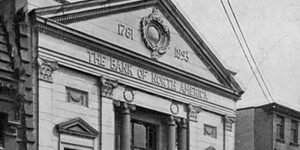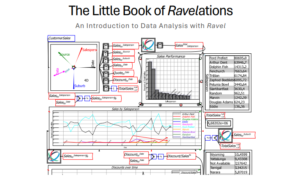How did bank regulation allow the United States to fund the rest of the War of Independence?
Robert Morris was appointed Superintendent of Finance of the United States in May of 1781, about two months after the Articles of Confederation were ratified.
The War of Independence was in its 6th year and the end was not yet in sight (although it was about two years away).
The American economy was in ruins, partly due to the war disrupting production, partly because the interim Continental Currency had become worthless, and partly because the United States didn’t yet have any currency or monetary policy.
So the first bank in the United States was chartered. The bank regulation was “creatively done” to allow the bank to continue financing the war.
————————————
This post is part of a larger series and sub-series.
Here is a link to the series: The history of banks and banking regulation
and to the sub-series: United States Banking and Bank Regulation History
————————————
Alexander Hamilton had read Adam Smith’s book The Wealth of Nations, which was published in 1776 and had become a strong proponent of a central bank that would help American become a world power. Hamilton proposed the creation of such a bank in a letter to Robert Morris written in 1781 while the Continental Army was in winter quarters.
Morris set this plan in action through the creation of The Bank of North America which started operations in January of 1782, which created the means of financing the rest of the war.
The bank was chartered by the United States Congress.
The bank was funded by the selling of shares. Ninety-nine people from Philadelphia (where the bank was located) bought bank shares as did the US Congress.
France had sent the United States Congress a $450,000 shipment of silver, which was used to fund the bank, which the bank then loaned to Congress. This money was used to continue the war.
The Bank of North America was a private bank, not a government agency or department, and the largest shareholder initially was the US Congress.
Later, when it was feared that Congress would default on loan payments, Morris sold the government’s shares to raise money to make the payments. This kept the US government funded until the war was over.
The bank had critics almost immediately, who felt it was an overreach of congressional power to fund a bank then borrow from it, and that the bank was a bastion for moneyed interests.
These fears were eased when bank directors chartered the bank in Pennsylvania as well, which means the bank was operating under two government charters simultaneously.
By 1783, Congress as well as several states passed laws allowing Americans to pay taxes with Bank of North America certificates, thereby giving them the principal characteristic of legal tender.
When the Articles of Confederation were replaced by the United States Constitution in March of 1789, the bank’s congressional charter ceased, and the bank operated under their Pennsylvania charter (and very briefly under a Delaware charter), which protected the bank in exchange for favourable terms on loans.
Subsequent to this, the Bank of North America did little business with the United States government, aside from relatively small loans to the US government during the War of 1812 and the US Civil War.
The bank continued operations.
After the passage of the National Bank Act in 1862, the Bank of North America changed to conform to the new rules. They were granted one exemption for historical purposes, and that is the law required national banks to have the word “national” in the name of the bank. For historical reasons, the Bank of North America was exempted from this requirement.
In 1923 the bank merged with Commercial Trust Company and became the Bank of North America and Trust Company.
In 1929 this bank merged with the Pennsylvania Company for Insurance on Lives and Granting Annuities.
In 1955 this bank was acquired by First Pennsylvania Bank, then in 1992 by CoreStates Financial Corporation, then in 1998 by First Union/Wachovia, then in 2008 by Wells Fargo.



